The Triassic - Jurassic Sandpit
|

April 9 - Overall view | Overall view of the sandpit and the prints left behind by the Turdus migratorius (sorry... the American Robin). The sandpit was flooded 5 days before these photos were taken. The granular size of the sand in this pit is much larger than the sand or silt commonly found in the Triassic/Jurassic sedimentary rocks. The weight of the birds is also very different than the weight of the typical dinosaur/reptile. A few assumptions are being made here. |
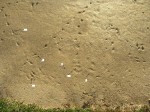
April 9 - Bottom center view of the sandpit | A - These prints look very much like those of the Grallator or Eubrontes. No wonder Edward Hitchcock thought that dinosaur footprints were made by birds-like creatures. Note how the prints in this trackway change in definition as the creature moves toward the center of the sandpit where the sand was wetter.
B - Different trackway but again the prints are less defined as they progress toward the center.
C - An example of a faded print, which could be confused with a ghost print (a.k.a. underprint).
D - Worm trails left behind by the Turdus migratorius's meal.
E - This pair of prints is deep and doesn't have a trackway. The creature apparently landed and took off in flight without taking any additional steps.
F - This trackway leads out from the center of the pit and skips a print. Also note that the spacing between the tracks in this trackway is much farther apart than those in A. In addtion, note the angles the prints make when walking slower vs. when walking at a faster speed. |
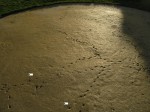
April 9 - Top center view of the sandpit | G - Note how this trackway has deep prints as the creature walked on the wet sand, the prints fade as it stepped through the puddle, then the prints are deep again as is moved to the center of the pit. Below G is a pair of prints starting where the creature landed then stepped through the same puddle then moved to the center of the pit. The prints in this trackway exhibit the same features as the trackway in G.
H - Walking to the right of this trackway is one that is comprised of faded prints. |

April 9 - Top right view of the sandpit | Prints that look like manprints and Eubrontes prints on the same strata. This demonstrates that the same creature, at a different time, can leave prints that appear different. One should be careful to jump to conclusions. |

April 9 - Same view as above but closer | The hallux claw can be seen with these prints. Walking to the right of the trackway in the center is one that is comprised of faded prints. Imagine for a moment if the scale was in feet and not inches. |
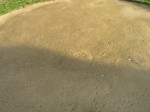
April 9 - Center of the sandpit | |
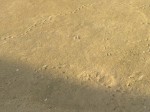
April 9 - Center of the sandpit | |

April 9 - Same view as above but closer | |
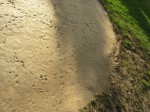
April 9 - Top left but from the opposite side | |
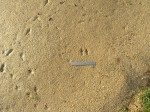
April 9 - Bottom right view | |
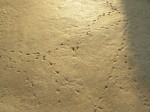
April 9 - Bottom left view | |

May 1 - Overall view of the sandpit | Overall view of the sandpit after the rainstorm. Excuse the pun but the slate is cleaned and no prints are present. This photo was taken in the morning. |
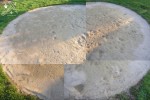
May 1 - Overall view of the sandpit | Late in the afternoon the water soaked sandpit dries a bit and fresh tracks appear. Note that remnants from before the rainstorm are still present. |
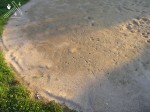
May 1 - Bottom left view | |
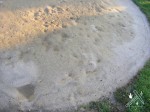
May 1 - Bottom right view | |
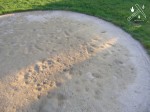
May 1 - Top right view | |
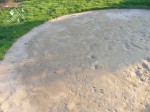
May 1 - Top left view | |
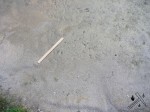
May 1 - Bottom left view | A close-up of a faint trackway. |
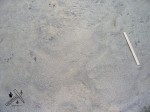
May 1 - Bottom left view | |
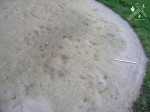
May 1 - Right view | |
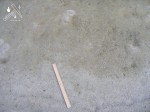
May 1 - Right view | A close-up of the right side with faint tracks. The tracks must have been formed while water was still in the pit. |

May 3 - Overall view of the sandpit | Two days after the last rain and prints are present. Note that a new creature is present in the pit (a dog or cat) and the bird prints are not as dominant as before. |
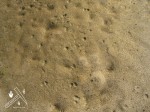
May 3 - Right side | A close-up shot of mixed tracks on the right side. |
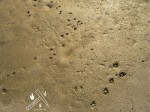
May 3 - Left side | A close-up shot of mixed tracks on the left side. |

June - Overall view of the sandpit | A long time has passed without significant rain. The top layer formed a crust and kids trampled through it. |

June - Close-up | Imagine if this layer was preserved. It would have left indistinguishable prints and formations. |
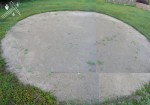
June - Overall view of the sandpit | Finally it rains but not enough to flood the pit. Note the surface details left behind by the raindrops. |
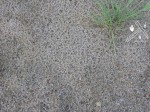
June - Close-up | A close-up of those surface details. |

June - Close-up | Note the faded impressions still left behind. These would have been washed away if the pit had flooded. |
Other interesting photos of natural soil details.
|
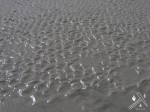
Beach sand | |
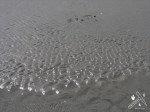
Beach sand | |
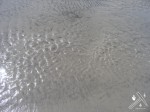
Beach sand | |
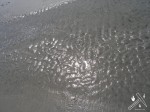
Beach sand | |

Beach sand | |
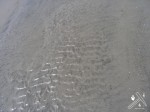
Beach sand | |
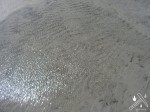
Beach sand | |
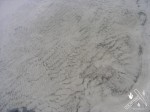
Beach sand | |
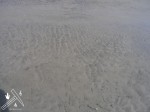
Beach sand | |
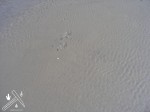
Beach sand | |
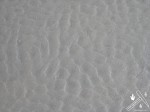
Beach sand | Ripples in the sand before I stepped. |
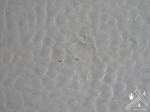
Beach sand | Immediately after I stepped in the sand. Note the drips in the sand from my foot as I stepped in the sand. |
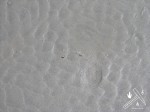
Beach sand | A few seconds after and the top of the footprint is fading away leaving only the heal impression. |
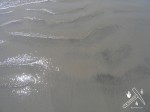
Beach sand | |
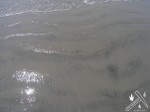
Beach sand | |
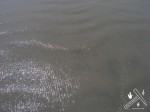
Beach sand | |
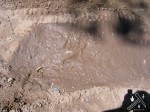
Fresh mud | Mud cracks and rain drops (unfossilized). Note the smooth surface and the impressions from the few raindrops or drops of water from the tree leaves above this area. |
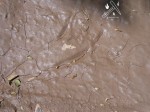
Fresh mud | |
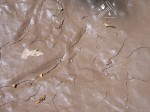
Fresh mud | Also note the impression which would have been called a tail drag if this mud was fossilized. |

Pretty mud cracks with lovely algea (biolamination?). | The shiny round disk is a quarter (used for scale). Wetter mud is towards the right of the photo. |

Pretty mud cracks with lovely algea (biolamination?). | Another view of the same spot as the photo above. |

Pretty mud cracks with lovely algea (biolamination?). | Another view of the same spot as the photo above. Wetter mud is towards the top of the photo. |

Pretty mud cracks with lovely algea (biolamination?). | Another view of the same spot as the photo above. Wetter mud is towards the bottom of the photo. Note the different layers and the mud cracks that are in common with the layers. |
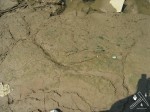
Pretty mud cracks with lovely algea (biolamination?). | Twenty steps were taken in the mud and the sneaker print is still clear. Steps are from left of photo to the right side. |
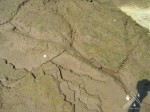
Pretty mud cracks with lovely algea (biolamination?). | I attempted to "slip" as I took large steps and left these footprints. |





















































